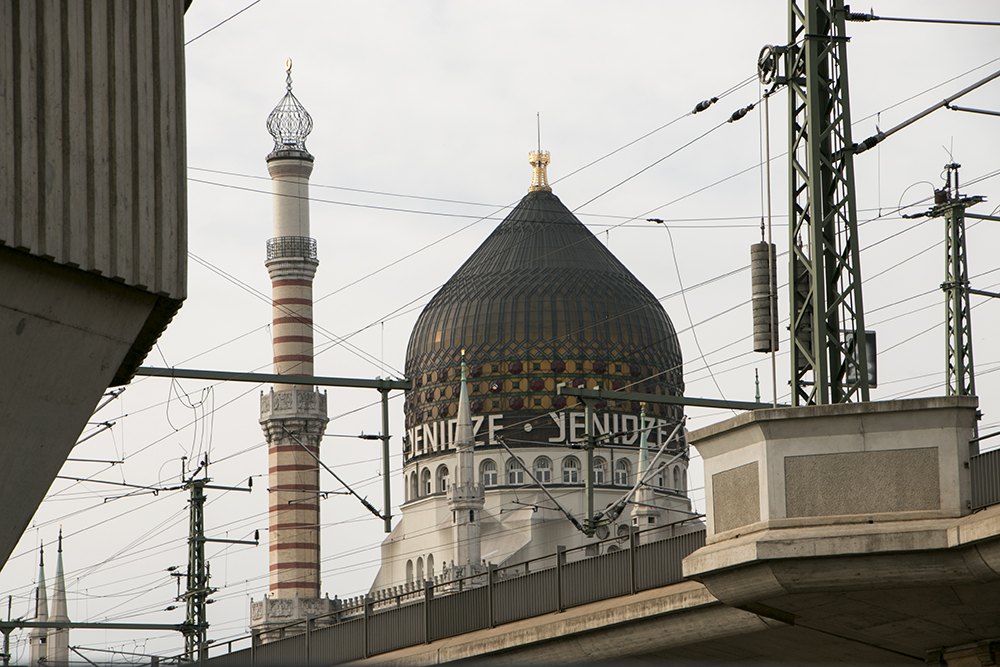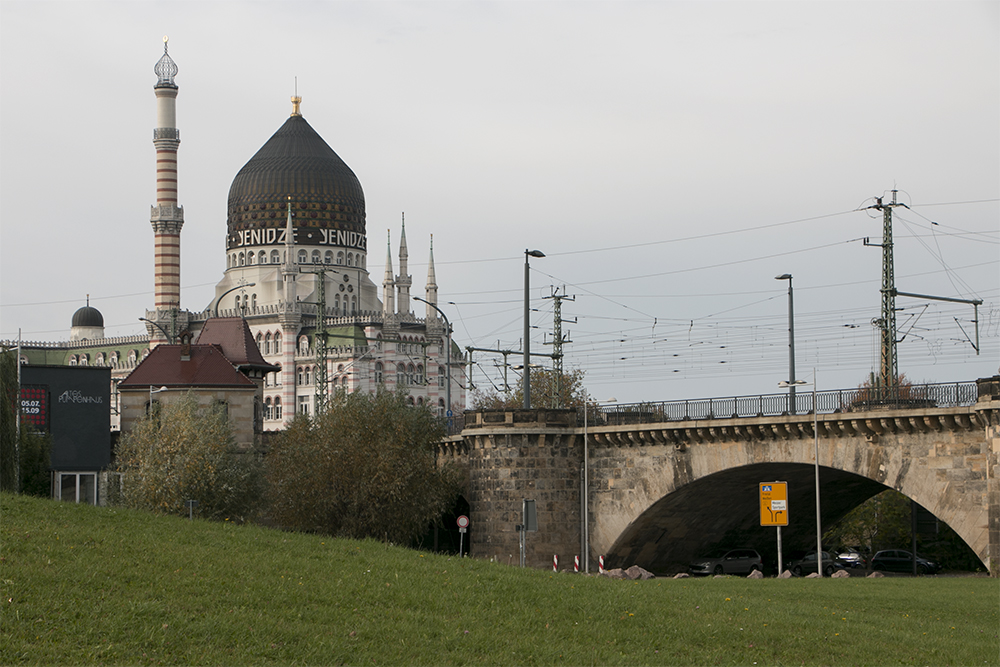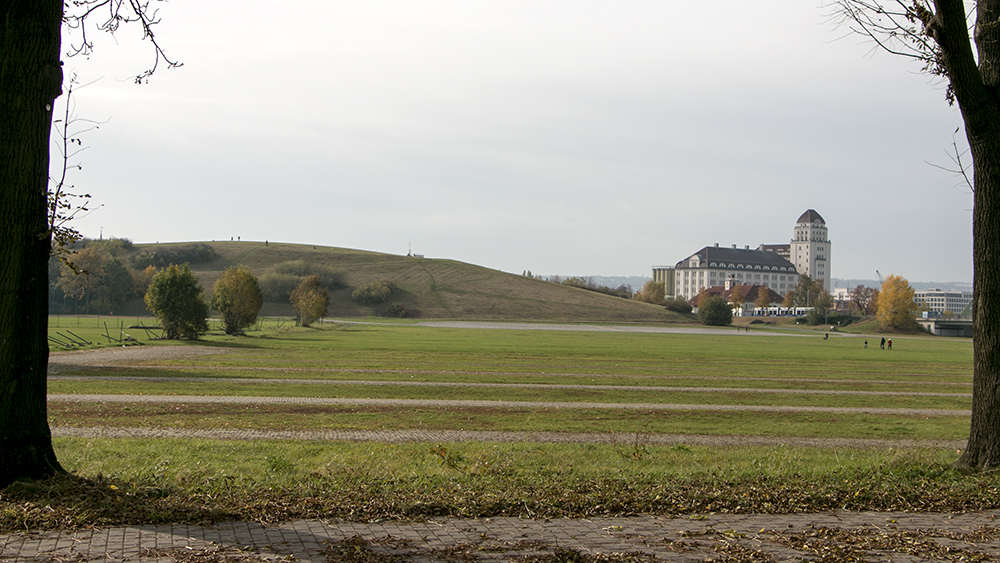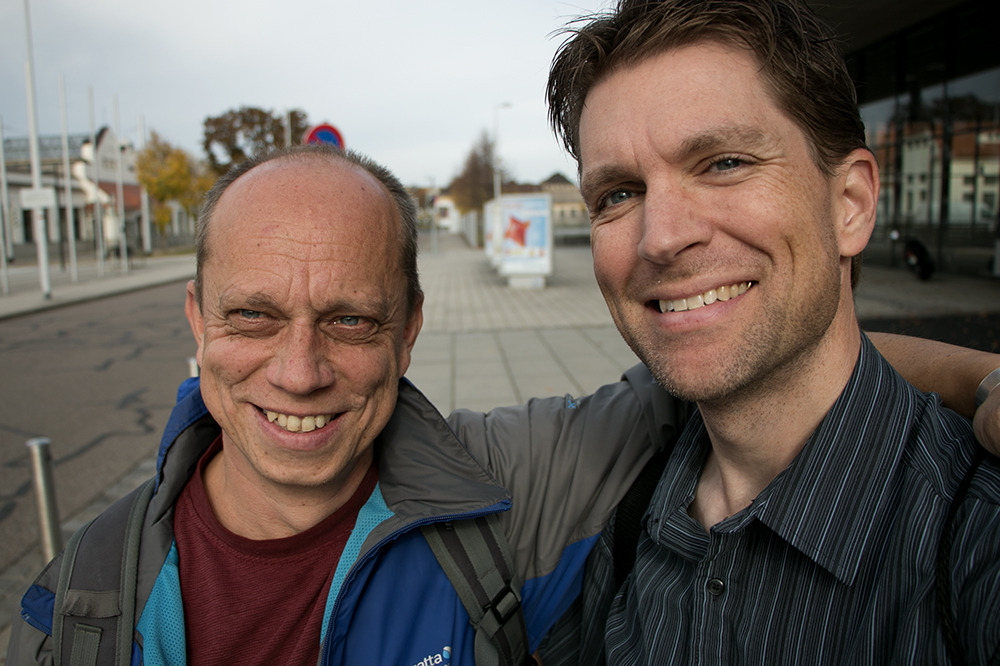Seeking Slaughterhouse Five
February 20th, 2014 | by Ken

To fans of Kurt Vonnegut (like me), Dresden is synonymous with his novel, Slaughterhouse-Five, Or the Children’s Crusade.
During World War II, Vonnegut and his fellow prisoners of war hid in the basement of a slaughterhouse while the Allies bombed the crap out of the city. I’m a big fan of Vonnegut, the observant cynic, lover of words, Mark Twain for our time. I brought along my copy of Slaughterhouse-Five and re-read it on my way to Dresden. This required me to temporarily set aside the new Jim Henson biography– not an easy feat for me. When the main character, Billy Pilgrim, is captured and transported to Dresden, Vonnegut writes:
The Americans arrived in Dresden at five in the afternoon. The box car doors were opened, and the doorways framed the loveliest city that most of the Americans had ever seen. The skyline was intricate and voluptuous and enchanted and absurd. It looked like a Sunday school picture of heaven to Billy Pilgrim.
Somebody behind him in the box car said, “Oz.” That was I. That was me. The only other city I’d ever seen was Indianapolis, Indiana.
So here I am in Dresden… Oz… Vonnegut’s city, the backdrop to his most famous novel. What will I do?
Take the Kurt Vonnegut Tour, of course. Details were a bit sketchy on the website, but a couple emails later, I had a date with Danilo. We met next to the statue of King Johan on Wednesday morning, and since I was the only person on the tour, we basically chatted as we walked around town.

And Dostoyevsky looked on
Honestly, there’s not that much to see here related to Kurt Vonnegut. Danilo regaled me with tales of Kurt Vonnegut’s life and pointed out various buildings as we walked, providing a bonus architectural and cultural tour.

For example, he pointed out the distant building that looks like a mosque. Danilo says it’s actually a factory; apparently, the designer took advantage of a law that exempted religious buildings from paying certain taxes.

But let’s not get off track here. The ultimate destination of our tour is slaughterhouse five, the actual facility where Vonnegut sought shelter from the bombing. We walked for quite a while along a tree-lined sidewalk, leaving the city center behind, passing a hill that is made of rubble from the bombing.

Finally, we came upon a collection of buildings enclosed by a gate. Danilo walked up to the guard shack and exchanged some words and gestures with the guard. The Kurt Vonnegut Tour, it turns out, is really a handshake deal by which some guards let us in the back door.
The back door of what? Well, check it out:
Hold that place in your mind, and read this:
There was a fire-storm out there. Dresden was one big flame. The one flame ate everything organic, everything that would burn.
It wasn’t safe to come out of the shelter until noon the next day. When the Americans and their guards did come out, the sky was black with smoke. The sun was an angry little pinhead. Dresden was like the moon now, nothing but minerals. The stones were hot. Everybody else in the neighborhood was dead.
So it goes.
Odd to be contemplating man’s cruelty to man while standing next to the coat check, but that would probably suit Kurt Vonnegut just fine. And by taking this tour, I had seen parts of Dresden I never would have with my nose buried in a guidebook.
Freed from the “we’re on a tour” formalities, Danilo and I chatted about topics non-Vonnegutian while riding the tram toward downtown, and I learned that he was a teacher in the Soviet days. Though he has no wish to go back to the old ways, he says it’s been difficult to make a living since the fall of Communism, as politicians spend more time looking out for themselves than their constituents.

I tipped Danilo with my leftover euros, we said our goodbyes, and I was left alone with my thoughts. As my buddy Kurt put it,
And what do the birds say? All there is to say about a massacre, things like “Poo-tee-weet?”
